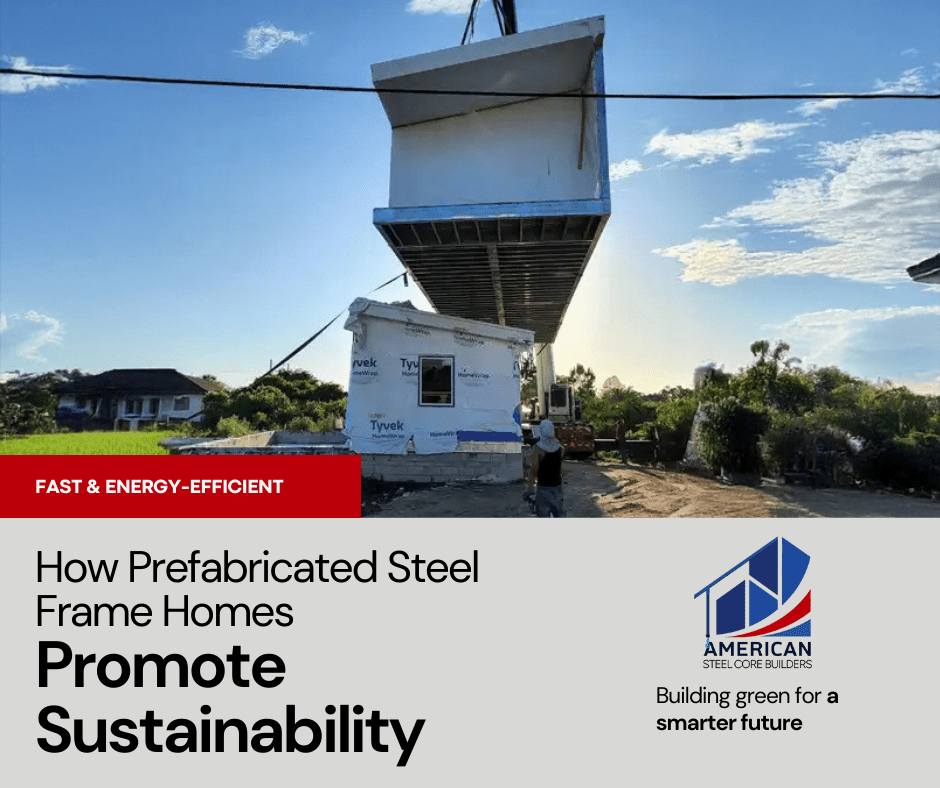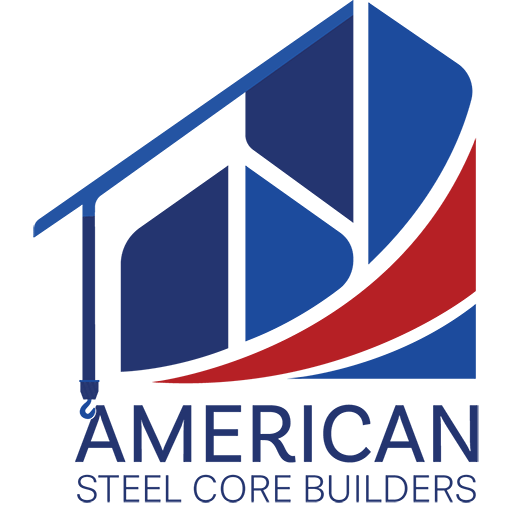
How Prefabricated Steel Frame Homes Promote Sustainability
In a world that’s becoming increasingly conscious about its environmental footprint, sustainable housing solutions have stepped into the spotlight. Prefabricated steel frame homes are one such innovation that checks all the “eco-friendly” boxes. They have emerged as a game changer in the realm of construction, promising not just energy efficiency but also durability and reduced waste. These homes, built in off-site factories, bring a host of benefits, both for the planet and for homeowners looking to make a responsible choice.
Advantages of Prefabricated Steel Frame Homes
When it comes to crafting your dream home, prefabricated steel frame homes are proving to be a game-changer, especially for those of us who care about Mother Earth. These types of homes not only offer an appealing, modern aesthetic but also come packed with sustainability benefits. Let’s dive into some of these advantages!
Reduced Construction Waste
A significant benefit of prefabricated steel frame homes is the drastic reduction in construction waste. Traditional construction practices are infamous for generating substantial amounts of debris, from wood scraps to packaging materials, most of which ends up in landfills. In contrast, prefab homes are assembled in a factory setting. Here’s why that’s important:
– Precision Engineering: Components are cut to size with minimal wasted material, ensuring every inch of steel and other materials is put to good use.
– Recyclability: When waste is generated, steel is 100% recyclable, reducing the burden on our environment.
– On-Site Need: Once prefabricated components are shipped to your location, the on-site assembly process typically produces little to no waste, as everything arrives ready to be put together.
Efficient Manufacturing Processes
Prefabricated homes benefit from controlled, efficient manufacturing processes that are both cost-effective and eco-friendly. This efficiency is achieved through:
– Standardization: By manufacturing homes in a standardized way, factories can optimize resource use, reduce energy consumption, and minimize waste.
– Reduced Transportation Impact: Materials are transported in bulk to the factory, rather than individually to construction sites, minimizing the carbon footprint of transportation.
– Weather-Independence: Since these homes are built indoors, there’s no concern about weather-related delays. This not only speeds up the construction timeline but also prevents material damage due to exposure.
Curated Material Selection for Sustainability
In addition to the meticulous construction process, the materials themselves are chosen with sustainability in mind. Steel is renowned for its durability, strength, and longevity, making it a prime choice for eco-friendly construction. Here’s why material selection matters:
– Longevity: Steel frames are incredibly durable, resistant to pests, and can withstand severe weather, reducing the need for repairs or replacements.
– Low Maintenance: Steel homes require less upkeep compared to traditional wooden homes, saving resources over time.
– Environmentally Friendly Options: Other materials used in prefab homes, such as insulated panels and non-toxic finishes, contribute to a healthy living environment and reduced ecological footprint.
Energy Efficiency Benefits
Another standout feature of prefabricated steel frame homes is their impressive energy efficiency. These homes are designed with innovations and features that significantly cut down on energy consumption, promoting a sustainable lifestyle.
Insulation and Thermal Performance
One of the keys to energy efficiency is solid insulation, and prefabricated steel homes deliver in spades. Here’s how they excel:
– Superior Insulation Materials: Many prefab homes incorporate state-of-the-art insulation materials that offer exceptional thermal resistance, reducing the amount of energy required for heating and cooling.
– Tight Building Envelope: The precision manufacturing of these homes ensures a tight building envelope, minimizing drafts and maintaining comfortable indoor temperatures.
– Reduced Energy Leakage: By minimizing gaps and leaks, these homes effectively conserve energy, reducing reliance on HVAC systems.
Innovative Design and Energy-Saving Features
Prefabricated steel frame homes are designed with cutting-edge features that make them a frontrunner in energy-saving design. For example:
– Natural Lighting: Homes are often constructed with large windows and strategic layouts to maximize natural light, reducing the need for artificial lighting during the day.
– Smart Home Technology: Many prefab homes come equipped with smart technology that optimizes energy usage, from thermostats to lighting systems.
– Renewable Energy Integration: It’s easier to integrate solar panels and other renewable energy solutions into these homes thanks to their modular nature.
Impact on Long-Term Energy Costs
The energy efficiency of these homes isn’t just great for the planet—it’s also kind to your wallet. Homeowners can enjoy significant savings over time due to lower utility bills. Here’s why:
– Consistent Energy Consumption: By maintaining a stable indoor climate, these homes decrease the stress on heating and cooling systems, translating to lower energy costs.
– Return on Investment: Though the initial setup for smart technologies and renewables might seem daunting, the cost savings on energy bills often quickly recover these initial expenses.
– Increased Property Value: Energy-efficient homes tend to attract buyers more easily, adding to the property’s overall value and appeal.
In the race towards sustainable living, prefabricated steel frame homes offer a winning combination of efficiency, innovation, and eco-friendliness. Not only do they help protect our environment by reducing construction waste and champion energy efficiency, but they also promise a brighter, greener future for homeowners and the planet alike. So, when considering the next steps toward your dream home, remember that you can make a perfectly sustainable choice without sacrificing style, comfort, or budget!
Eco-Friendly Construction Practices

Building a house often involves processes and materials that can negatively impact our environment. However, prefabricated steel frame homes are paving the way for more eco-friendly construction practices. Let’s dig deeper into some of the ways these innovative homes make a positive difference.
Use of Recyclable and Non-Toxic Materials
One of the standout features of prefabricated steel frame homes is the use of recyclable and non-toxic materials. Steel is a material that can be recycled countless times without losing its strength or integrity. This means that when a steel frame is no longer needed, it can be melted down and reshaped into something new, minimizing waste.
Additionally, by opting for non-toxic materials, these homes contribute to a healthier living environment. Non-toxic materials are free of harmful chemicals often found in traditional building materials like formaldehyde, which can have long-term effects on our health. This makes prefabricated steel homes an inviting choice for environmentally conscious families looking to create safe spaces for their loved ones.
Reduction of Carbon Footprint
Another big win for sustainability is the reduction of carbon footprint during the construction of prefabricated steel frame homes. Traditional building methods can be resource-intensive and usually involve significant transportation of materials to the construction site, leading to a high carbon footprint.
In contrast, prefabricated homes are manufactured in controlled factory settings to exact specifications. This method drastically cuts down on the unnecessary transportation of materials back and forth. Once manufactured, the components are transported in bulk to the building site—further slashing the carbon emissions associated with transportation.
Moreover, because these homes are precision-engineered, there’s much less waste generated during the assembly process. Every component is crafted to fit perfectly, reducing waste by eliminating the usual on-site cutting and trimming that often results in leftover scraps. Less waste equals a smaller environmental impact, making these homes a sustainable option.
Integration with Renewable Energy Sources
Prefabricated steel frame homes don’t stop at just being efficient in construction—they’re also highly compatible with renewable energy sources. These homes can easily accommodate solar panels, wind turbines, and other renewable technologies, allowing homeowners to tap into clean energy and reduce their reliance on non-renewable power sources.
Not only can the integration of renewable energy sources assist in reducing energy bills, but it also significantly reduces the home’s overall carbon footprint. Many of these homes are designed with energy efficiency in mind, incorporating features like energy-efficient windows and superior insulation that work hand in hand with renewable energy systems.
By embracing these eco-friendly practices, prefabricated steel frame homes are a game-changer in sustainable living, offering a promising alternative for future homebuilders committed to making a positive environmental impact.
Conclusion
In a world where sustainability is a top priority, prefabricated steel frame homes emerge as an ideal solution. Their eco-friendly construction, combined with enhanced energy efficiency, makes them an excellent choice for environmentally conscious individuals. These homes not only reduce waste and resource consumption but also offer durability and cost-effectiveness. By choosing prefabricated steel frame homes, you’re not just investing in a house; you’re supporting a sustainable future. Consider this innovative approach for your next home to contribute to a greener planet.
